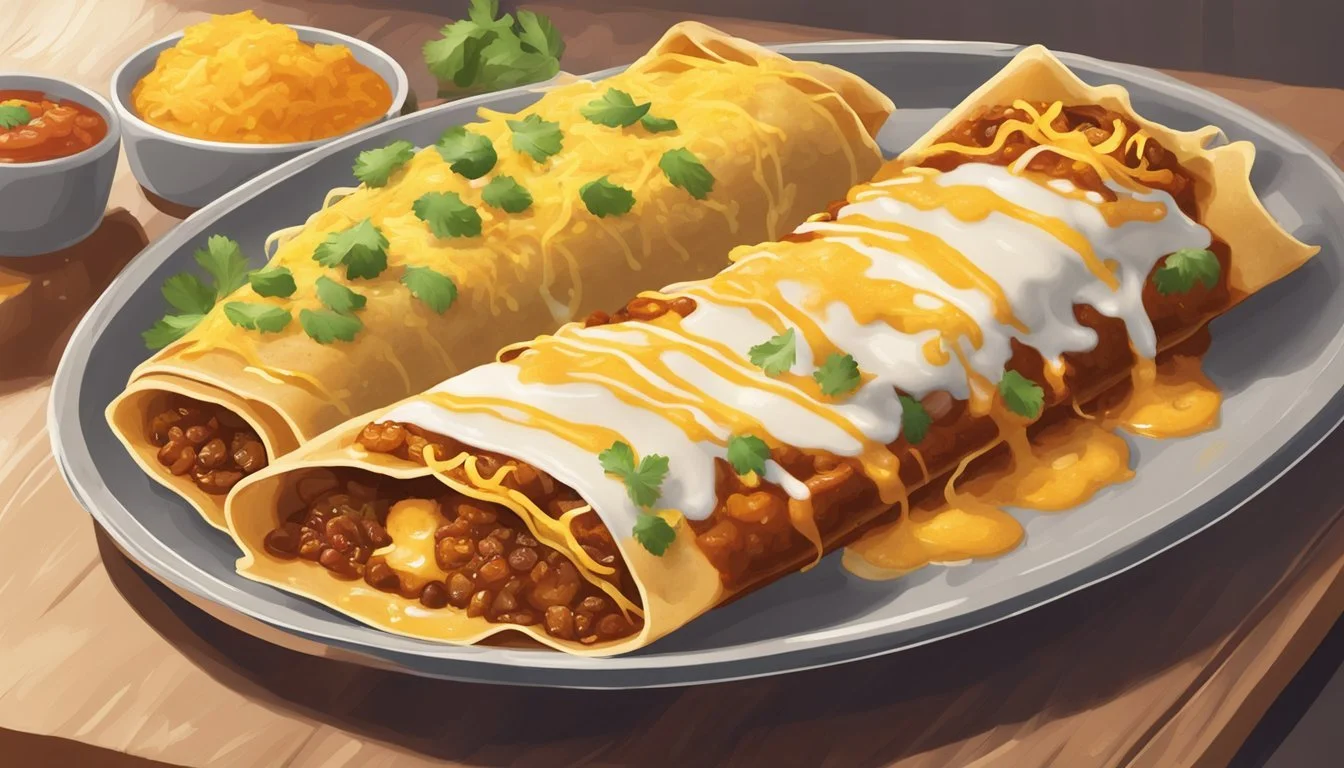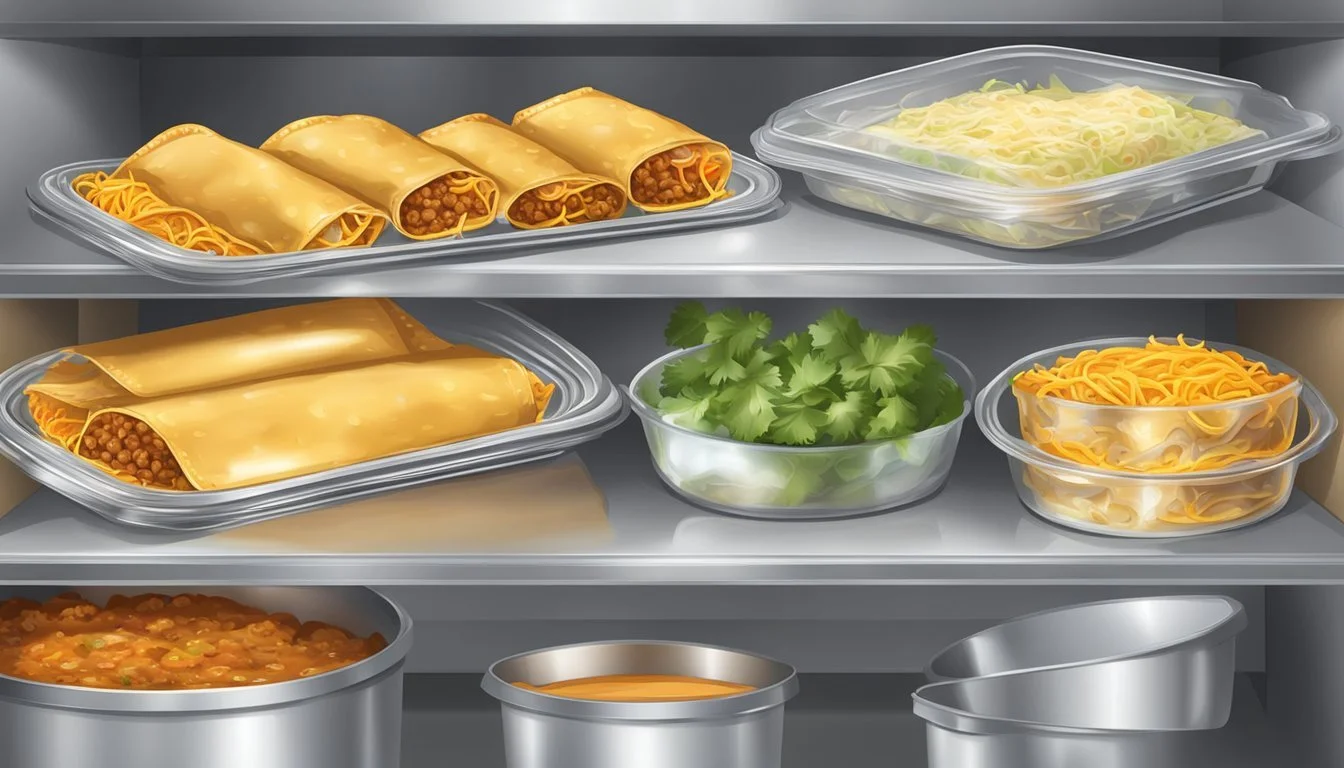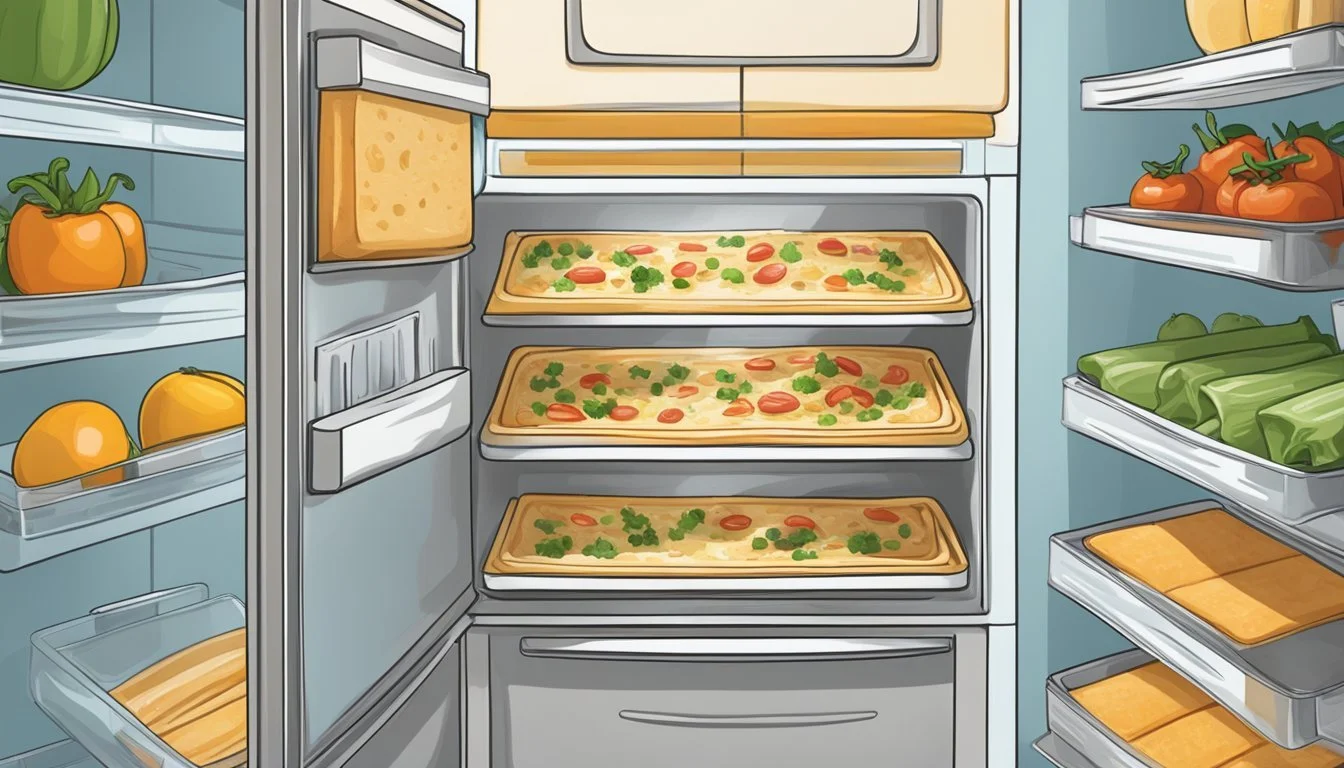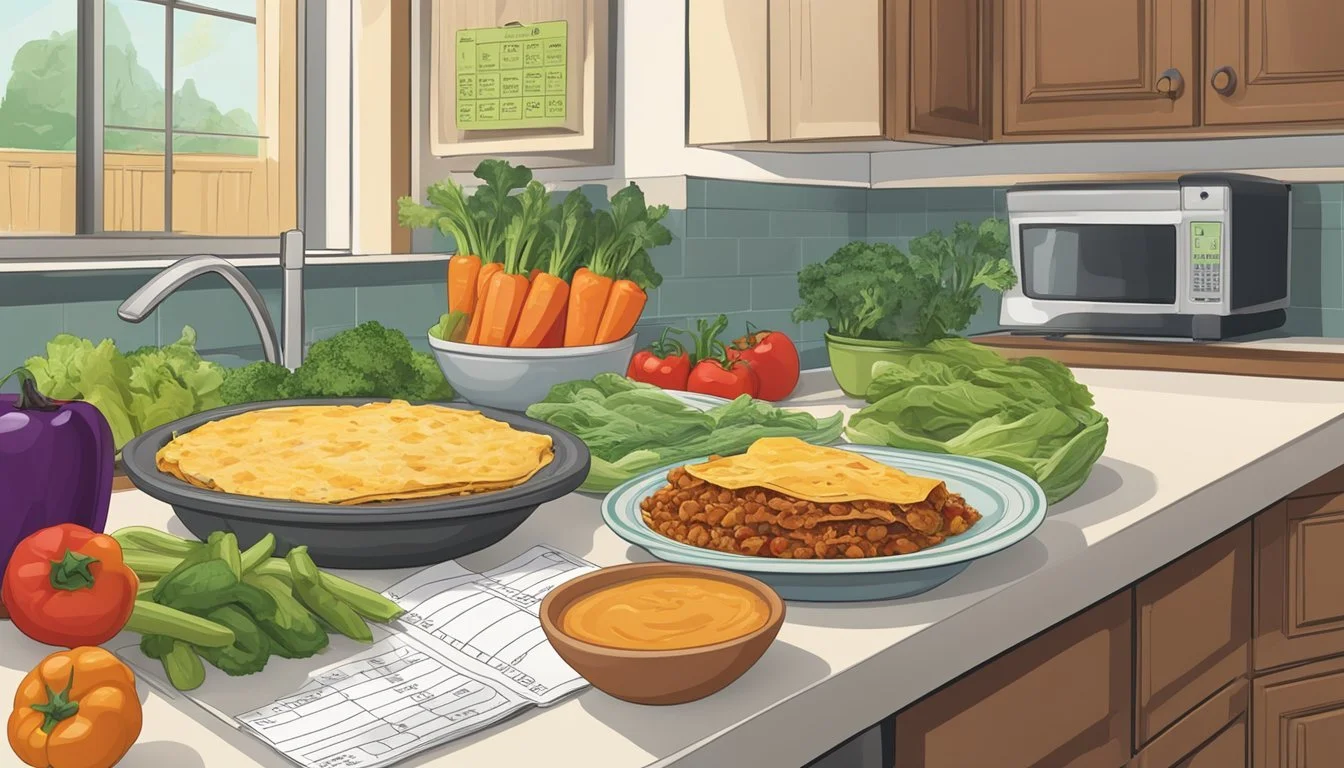How Long Do Enchiladas Last?
Shelf Life and Storage Tips
For those who savor every bite of a delicious enchilada, knowing how long they last is essential for enjoying every bit of the dish safely. Properly stored enchiladas can last 3-5 days in the refrigerator and up to 3 months in the freezer. This means you can prepare enchiladas in advance or save leftovers without worrying about spoilage too quickly.
Storing enchiladas correctly involves using airtight containers to maintain freshness. This practice helps prevent moisture loss and bacterial growth, prolonging the life of your meal. Checking for signs of spoilage, such as off smells or changes in texture, is always a good practice to ensure optimal food safety.
For those considering meal prep or batch cooking, selecting suitable baking dishes that can transition from freezer to oven is crucial. This allows you to make larger quantities of enchiladas and store them efficiently without compromising on taste or texture when reheated.
Basics of Enchiladas
Enchiladas are a traditional Mexican dish. They consist of tortillas filled with various ingredients and topped with sauce. Both corn and flour tortillas are commonly used.
Fillings can include:
Most fillings are pre-cooked before being placed in the tortillas.
Cheese is often added both inside and on top of the enchiladas. Common types of cheese used include cheddar, Monterey Jack, and queso fresco.
Enchilada sauce is poured over the rolled tortillas. It can be red, green, or even made from tomatoes or tomatillos.
After assembling, enchiladas are baked in the oven at 350°F (175°C) for about 20-30 minutes. This helps meld the flavors together and melts the cheese on top.
Preparation Techniques
Preparation techniques for enchiladas involve careful assembly of ingredients, precise baking methods, and opportunities for customization to enhance flavor and cater to dietary preferences.
Assembling Ingredients
Ingredients: The base ingredients for enchiladas typically include tortillas, a variety of fillings such as meat or beans, cheese, and enchilada sauce. Fresh herbs and spices like cilantro, cumin, and chili powder can add depth to the dish.
Steps:
Fillings: Common fillings include shredded chicken, ground beef, beans, or vegetables. The fillings should be cooked and seasoned before assembly.
Tortillas: Corn tortillas are traditional but flour tortillas are also used. Heating the tortillas beforehand can prevent them from breaking when rolled.
Cheese: A blend of cheeses, such as cheddar and Monterey Jack, helps to achieve a rich, flavorful meal.
Baking Fundamentals
Preheat Oven: Preheating the oven to 350°F is critical for even cooking. This step ensures that your enchiladas bake thoroughly from the start.
Baking Dish Arrangement: Lightly oil or spray the baking dish to prevent sticking. Place assembled enchiladas seam-side down in the dish to keep them intact during baking.
Baking Time: Bake enchiladas for 25 to 30 minutes or until the cheese is melted and bubbling, and the edges of the tortillas turn golden brown. Depending on the filling's thickness, baking time might vary slightly.
Customization Options
Fillings Variety: Enchiladas can be tailored to individual tastes. They can be made vegetarian by using beans and vegetables, or more decadent with meats like seasoned chicken or beef.
Sauces: Traditional red enchilada sauce is a staple; however, green sauce made from tomatillos or a creamy cheese sauce can offer distinct flavors.
Spices and Herbs: Adding different spices and fresh herbs can significantly alter the flavor profile. Cumin, oregano, and garlic are popular options, while fresh cilantro or parsley can be sprinkled on top for a burst of freshness.
Dietary Preferences: Shared plates can cater to various dietary needs by customizing specific enchiladas in the batch. Gluten-free tortillas and vegan cheese are available options.
Storage Guidelines
Proper storage of enchiladas ensures they remain fresh and safe to eat. Key methods involve refrigeration, freezing, and recognizing spoilage signs to avoid health risks.
Refrigeration Best Practices
When storing enchiladas in the refrigerator, it is essential to use suitable containers and maintain the right conditions. Ensure enchiladas are placed in an airtight container or wrapped tightly with plastic wrap or aluminum foil to prevent air exposure, which can lead to bacterial growth.
Refrigerated enchiladas typically last 3-5 days. Keep the refrigerator temperature at or below 40°F (4°C) to maintain freshness. It's also wise to store the enchiladas in the coldest part of the refrigerator. Regularly check for signs of spoilage, such as unusual odors or a soggy texture.
Freezing and Thawing
To extend the shelf life of enchiladas, freezing them is a practical option. Use freezer-safe airtight containers or double wrap with plastic wrap followed by aluminum foil to avoid freezer burn. For best results, enchiladas can be frozen for up to 3 months.
When ready to use, thaw the enchiladas by placing them in the refrigerator overnight. If time is limited, immerse the container in cold water until defrosted. Avoid leaving them out at room temperature, as it may lead to uneven thawing and potential bacterial growth.
Signs of Spoilage
Recognizing spoilage early helps prevent foodborne illnesses. Observe the enchiladas for any mold growth, which can appear as green or black spots. A brown color and a soggy texture are also indicators of spoilage.
Additionally, pay attention to any off-putting smells. If the enchiladas emit a sour or unusual odor, it is best to discard them. Monitoring these signs ensures that the enchiladas remain safe to eat and retain their quality.
Reheating Process
Reheating enchiladas properly is important to retain their texture and flavor. Different methods such as using an oven, microwave, or other alternative methods can help achieve this.
Oven Method
Using an oven is highly recommended for reheating enchiladas.
Preheat the oven to 350°F (175°C).
Place the enchiladas in an oven-safe baking dish.
Cover the dish with aluminum foil to prevent drying out.
Bake for 20 minutes.
Uncover for the last 5-10 minutes to allow the cheese to melt without becoming too crusty.
This method ensures even cooking and a nice baked texture.
Microwave Technique
The microwave is a quicker option but requires some care to avoid sogginess.
Place the enchilada on a microwave-safe plate.
Cover with a microwave-safe lid or splatter guard.
Microwave on high for 2 minutes.
Check if heated through. If not, continue in 30-second intervals.
For better heat distribution, consider poking holes in the wrap or cutting it into smaller pieces. This method is fast but may compromise texture.
Alternative Methods
Other methods include using a toaster oven or a skillet.
Toaster oven: Preheat to 350°F. Place enchiladas in a toaster oven-safe dish, heat for 15-20 minutes. Check periodically.
Skillet: Heat a small amount of oil on medium-high. Place enchiladas, leaving space between them. Cook for 2-4 minutes to crisp the bottoms.
These alternatives offer flexibility and can retain or enhance the texture of the enchiladas.
Serving Suggestions
Enchiladas are a versatile dish that pairs well with a variety of side dishes, toppings, and accompaniments. These additions can elevate the meal, providing flavors and textures that complement the enchiladas perfectly.
Side Dishes
Rice and Beans A classic choice is Mexican rice, also known as Spanish rice. This side dish is flavorful and complements the spiciness of the enchiladas. Black beans or refried beans also work well, adding protein and a creamy texture.
Salads A light, refreshing salad can balance the richness of enchiladas. Consider a simple green salad with lettuce, tomatoes, and onions, or a tangy coleslaw with a citrus vinaigrette.
Vegetables Grilled or sautéed vegetables such as bell peppers, zucchini, and onions can add a nutritious, colorful element to the meal.
Toppings and Garnishes
Cheese Sprinkle shredded cheddar, Monterey Jack, or a Mexican blend cheese on top of the enchiladas. The gooey melted cheese adds depth to the flavor.
Sour Cream A dollop of sour cream provides a cool, creamy contrast to the spicy enchiladas.
Guacamole and Salsa Homemade or store-bought guacamole and salsa are excellent choices. The creamy avocado in guacamole and the tangy, spicy kick of salsa enhance the overall experience.
Cilantro and Onions Freshly chopped cilantro and diced onions add a burst of freshness and crunch. These can be sprinkled on top of the enchiladas before serving.
Accompaniments
Tortilla Chips Serve a basket of crisp tortilla chips alongside the enchiladas. They are perfect for dipping into the salsa or guacamole.
Pickled Vegetables Pickled jalapeños or other vegetables can add a spicy, tangy bite to the meal.
Drinks A refreshing drink can complete the meal. Consider serving horchata, a traditional Mexican rice milk beverage, or a simple limeade. For adults, a light Mexican beer or a margarita can be a fitting choice.
By adding thoughtful sides, toppings, and accompaniments, you can transform a simple serving of enchiladas into a full and satisfying meal.
Health and Nutritional Considerations
When preparing or consuming enchiladas, it's essential to take into account their caloric content and any dietary restrictions. These factors can significantly impact the overall nutritional value and suitability of the dish for various diets.
Caloric Content
The caloric content of enchiladas varies depending on the ingredients used.
Meat-based fillings such as beef or chicken tend to be higher in calories compared to vegetarian options like beans or vegetables.
Adding cheese can further increase the calorie count due to its fat content.
For a rough estimate, a single meat enchilada with cheese can range between 300-500 calories, while a vegetarian enchilada is likely to be around 200-350 calories.
To manage caloric intake, consider using low-fat cheese options or reducing the portion size. It's also beneficial to use whole wheat tortillas instead of regular ones to add fiber and improve satiety without significantly increasing calories.
Dietary Restrictions
When catering to dietary restrictions, several adjustments can be made to ensure enchiladas are suitable for everyone.
For those requiring gluten-free options, using corn tortillas instead of flour ones can help.
Additionally, vegetarian enchiladas can be made using beans, vegetables, or soy-based meat substitutes as the filling.
For dairy-free diets, omit the cheese or use alternatives like nutritional yeast or plant-based cheeses.
People with lactose intolerance can also benefit from lactose-free cheese varieties.
For those on low-sodium diets, using homemade sauces and limiting processed ingredients can help maintain flavor while reducing sodium levels.
Addressing these considerations can make enchiladas a more inclusive and nutritious option for a diverse range of dietary needs.







